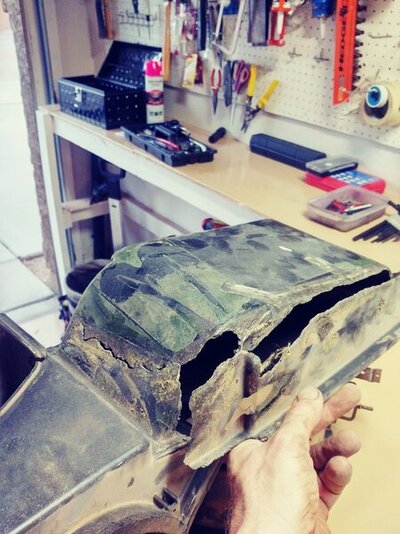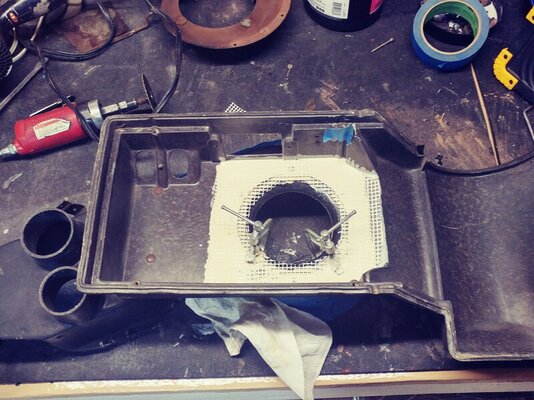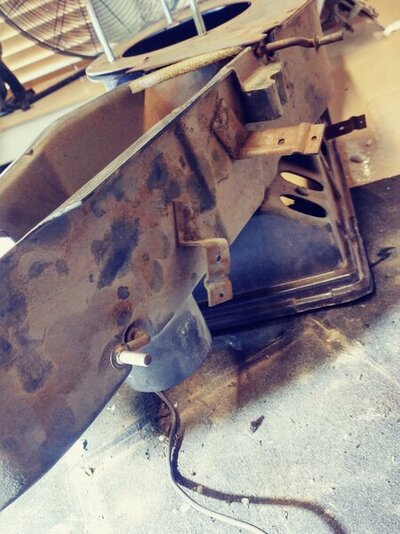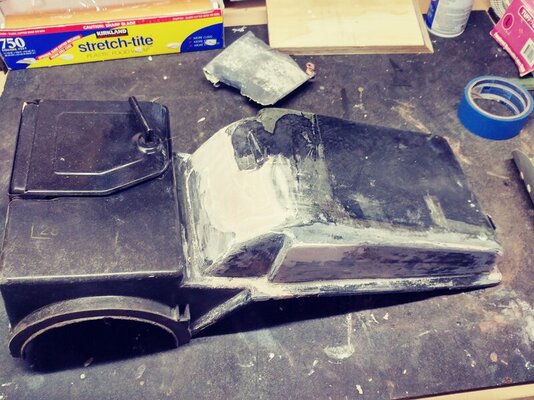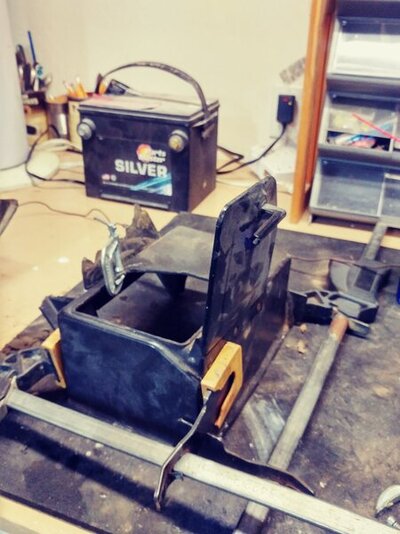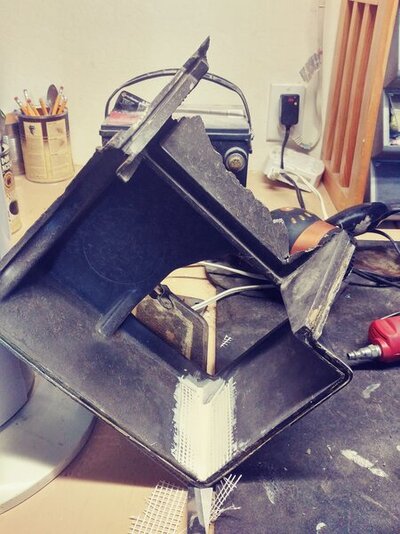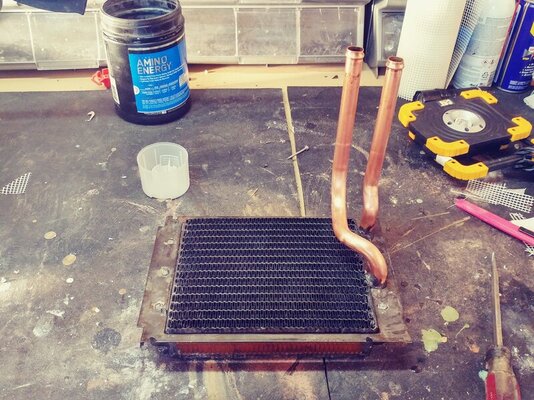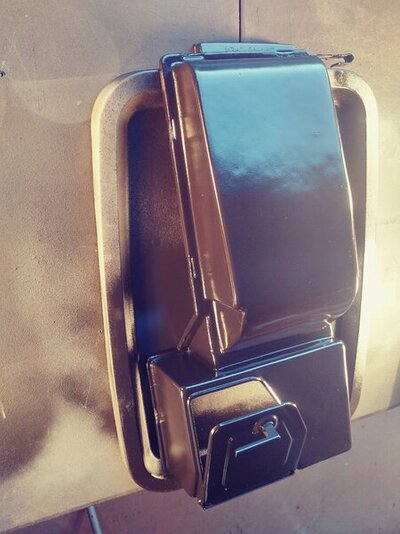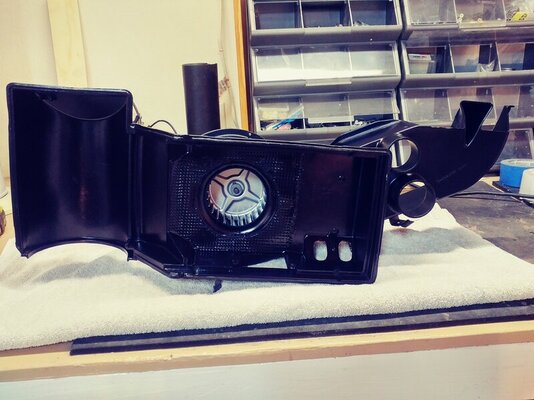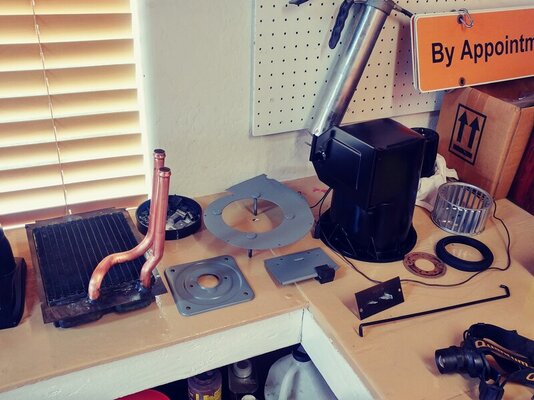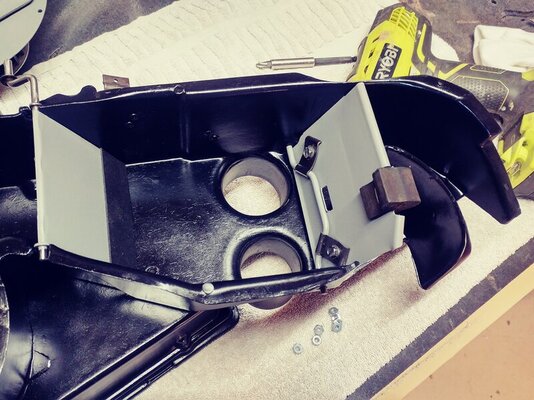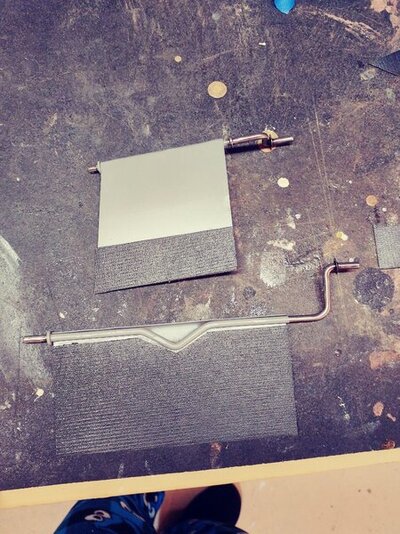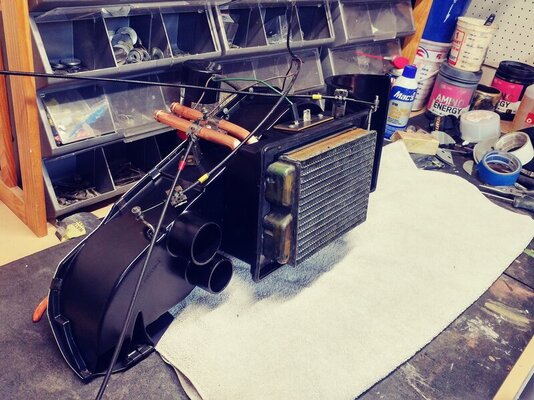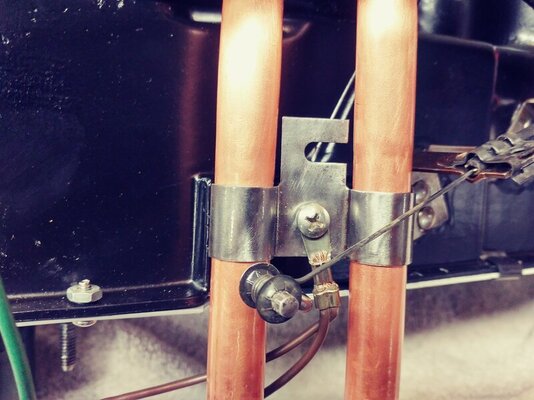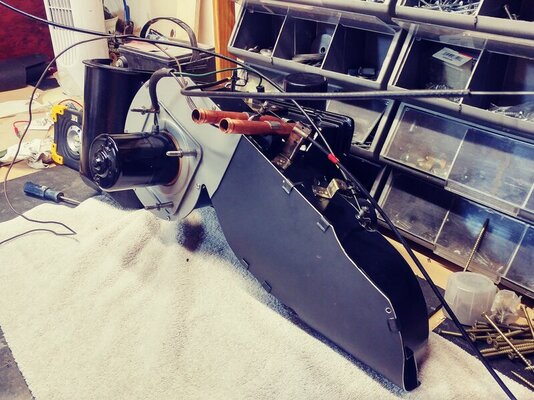As you can see my heater box was a trainwreck although all of the components were there and the blower motor still functioned. While the car was being worked on when I could in my office warehouse I made detailed repairs like this in my small shop at home. The biggest challenge was "gluing" the shattered plenum pieces back together. Where the halves of the main body meet there is a male/female seal arrangement making the repair alignment of the pieces critical. In this "How To" I don't have many tricks to simplify, but it does show what is possible with patience. Not knowing what the actual case material is I chose epoxy and reinforcing fibermesh for the repair. Epoxies offer superior adhesion with very little shrinkage unlike "boat resin" which is vinyl ester or polyester. Boat Resins shrink considerably during cure which consumes much of the available bond strength so if you're building something new boat resins are fine, for any repair though, use epoxy. All surfaces were aggressively sanded and cleaned with a chlorinated solvent such as M.E.K. or Toluene. The epoxy I chose was 100% solids and actually flexiblized with an elongation of 80%. This type of epoxy retains the bond line better if/when it is shocked by impact. regular epoxies are more brittle and give way more readily along a bond line, especially on an unknown plastic material. I also added silica fume as necessary to thicken the epoxy, sometimes to a near paste consistency to eliminate runs etc. Once the shell was repaired I used body filler and elbow grease to finish. All interior doors were refurbished with materials I had on hand, I didn't think to look for a seal kit for this unit until after I was almost done, live and learn. The OEM back wall of the plenum is a clipped on paper hardboard product and was shot so I used it as a template, the new material I conjured was 3 layers glued together of a stiff black construction paper product I found at a Walmart. Raw steel parts you see were polished and clear coated including the heater core copper inlets.
Rebuilding a shattered heater box
- Author I8NEMO
- Publish date
- Article read time 2 min read

